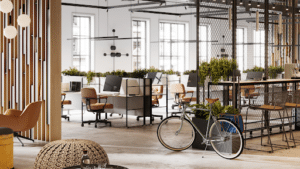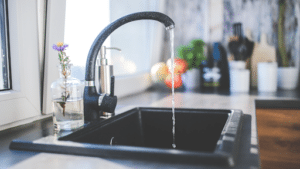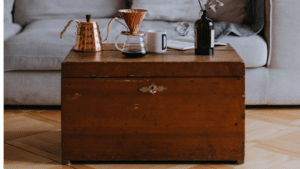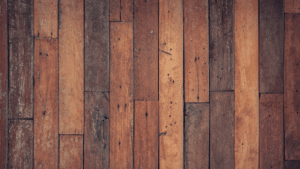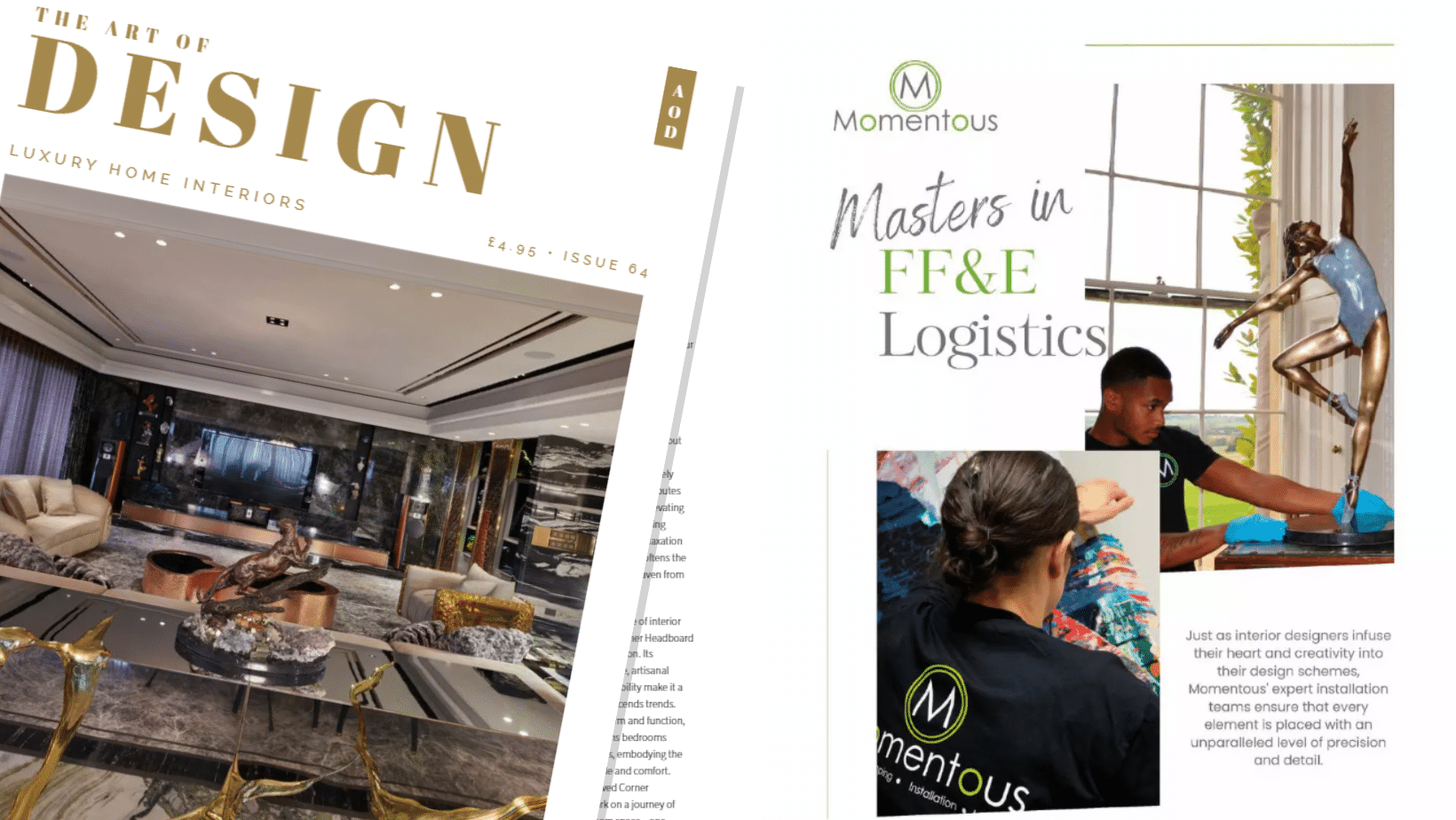Warning: Undefined variable $post_id in /var/www/vhosts/momentous.global/httpdocs/wp-content/themes/momentus_wp/single.php on line 20
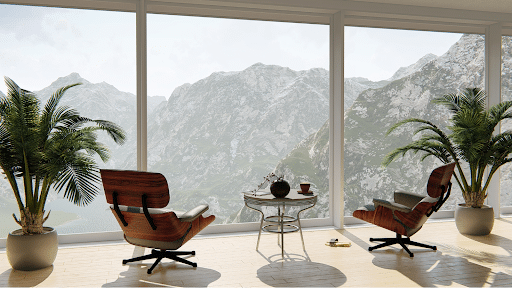
10 Eco-Friendly Interior Design Ideas for FF&E Spaces
POSTED ON May 22, 2023 BY Louise DunckleyEco Friendly Interior Design Ideas
So, you are tasked with the challenge of designing and planning the Furniture, Fixtures and Equipment (FF&E) for a space, but you don’t know where to start. With the increasing awareness of environmental issues and the need for sustainability, eco-friendly design has become a popular trend in the interior design industry.
But eco friendly interior design that is environmentally friendly design isn’t just a trend – it’s a responsible approach to creating spaces that look great and have a positive impact on the environment. In this article, we will explore 10 inspiring ideas for eco-friendly interior design in FF&E spaces that will help you create a space that is both stylish and sustainable.
1. Use Sustainable Materials
Choosing sustainable materials for your interior design can add unique character and warmth to a space. Materials such as bamboo, recycled wood, and stone can be used to create stunning, one-of-a-kind design elements that are both eco-friendly and visually appealing. These materials have a natural beauty and texture that can enhance the overall aesthetic of a space, making it feel more inviting and comfortable.
2. Energy-efficient Lighting
Energy-efficient lighting is crucial to any eco-friendly interior design. The first thing to consider is how natural lighting can be utilised best, as this avoids unnecessary energy use and creates an inviting space. Installing mirrors can help reflect natural light around the space, making it feel brighter and more spacious.
However, if artificial lighting is needed, it’s essential to consider using LED bulbs. LED bulbs are energy-efficient, long-lasting, and emit less heat than traditional incandescent bulbs. This can help reduce energy consumption and save money on electricity bills.
3. Biophilic Design
Including natural features when considering your eco friendly design ideas is often overlooked. Natural features in a space can create a sense of calm and add a unique atmosphere in an eco-friendly way. Interior designers often use plants to bring the outside in, enhancing the space’s aesthetics while also purifying the air. Among that, plants can also change throughout the year, providing a way to showcase seasonal change in your interior design.
Water features, such as fountains or water walls, are also an excellent addition to any space, as the sound of running water has a calming effect and can change the atmosphere of the room.
4. Water Conservation
Water conservation is an essential aspect of eco-friendly interior design. However, it doesn’t have to look unappealing. Consider using water pressure fixtures on taps, showerheads, and toilets. These fixtures can reduce water usage by up to 50%, making them an excellent choice for any eco-conscious design project.
5. Upcycling
An advantage of creating an eco-friendly space is the ability to create something completely unique. Designers achieve this by upcycling furniture, statement pieces, and lighting. Ideas for upcycling could include repainting, repurposing, or redesigning an item you already have to fit your aesthetic and function.
To reduce pressure on creating new products and waste when designing an eco-friendly space, Upcycle an existing item to fit your needs. Upcycling also creates a new appreciation for things, according to a design study, which helps them last longer in your favour.
6. Natural fabrics
Fabrics are typically classified into two groups: natural and synthetic. Natural fabrics, which come from plants or animals (such as wool, silk, linen, and cotton), have a more positive environmental impact than chemically created synthetics. This is a significant advantage when designing an eco-friendly interior. Although products made from natural fibres can be more expensive, they are also more durable. This means that you won’t have to replace things as often and create even less waste.
7. Non-toxic Paints
A simple yet effective swap to create an eco-friendly space is to use non-toxic paint. In recent years, there has been growing awareness of how simple changes can positively impact the environment. Non-toxic paint is sourced from natural materials and is kinder to our environment by not releasing harmful chemicals into the air. Additionally, it is considered non-hazardous waste, making disposal easy and safe.
By using non-toxic paint, you can create a healthier indoor environment while reducing your ecological footprint. So, consider switching to non-toxic paint in your next design project.
8. Recycled Accessories
Amidst the many incredible designers and brands out there, some specialise in creating new products from existing materials through recycling. By repurposing waste to create new items, each piece that is designed and created becomes unique, quirky, and interesting. Among that, using recycled materials can add depth to the design of a space and help avoid a generic look.
This approach to design not only benefits the environment by reducing waste but also results in visually captivating pieces that can serve as a statement within a space. When you combine this with supporting local and independent designers, your space instantly becomes more appealing and meaningful.
9. Sustainable Flooring
Flooring is an essential element of interior design that should not be ignored. Investing in good flooring can create a statement piece that can change the whole look. Choose sustainable options to reduce the impact on the environment.
To create an eco-friendly and sustainable flooring solution for your interior space, consider finding flooring made from recycled products. Some examples of sustainable flooring options include bamboo, reclaimed wood, cork, and recycled rubber. This approach can not only be cheaper for your budget, but it can also help to reduce the amount of waste that ends up in landfills. Sustainable flooring materials are often more durable and require less maintenance, making them a smart long-term investment.
10. Find a sustainable FF&E service provider
If you are looking for FF&E (Furniture, Fixtures, and Equipment) services for a larger space, we recommend hiring a provider. At Momentous, we have over 40 years of experience and logistics centres across the UK. We work with you to manage logistics and supplies for your space. This includes debris removal, installation, and transportation, all key in interior design projects like yours. We take your needs into account to ensure a seamless process and the best possible environmental care. Find out more about us today.
